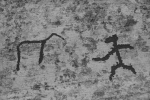
Fragile bones of people today are due to reduced physical activity
 Modern humans have a much lighter bone structure than those of our ancestors and other modern primates, and an international team of researchers think they may know why, says a report in the Proceedings of the National Academy of Sciences.
Modern humans have a much lighter bone structure than those of our ancestors and other modern primates, and an international team of researchers think they may know why, says a report in the Proceedings of the National Academy of Sciences.
“We set out to test three potential explanations for modern human gracility and any one of them would have been interesting,” explains Timothy M Ryan, lead author. “What we found was the most interesting.”
It seems that a lack of constant physical activity causes the bone in the head of the femur (the long bone in the thigh) to become thinner and lighter than that found in more mobile populations or modern primates such as chimpanzees and gorillas. This knowledge may help prevent osteoporosis and hip fracture in older people.
The research team compared hip joint samples from foraging populations, early agriculturalists and primates (59 humans and 229 primates).
Agriculturalists were found to have lower bone mass than the foragers. The bone characteristics of the more mobile foragers overlapped with those of the nonhuman primates.
“There are other things that could account for some of the differences between early agriculturalists and foragers,” the researchers say. “The amount of cultivated grains in the diet of the agriculturalists, in this case maize, as well as possible deficiencies in dietary calcium may also contribute to lower bone mass. It does seem, however, that the biomechanical aspects of foraging play a large part.
“The findings of the present study have significant implications for understanding human skeletal form and its relationship to age-related bone loss in contemporary human populations. We need to understand the difference in bone structure caused by diet, behavior and evolution. However, I think the key appears to be higher physical activity and mobility from a very young age that makes the bones of nonhuman primates and human foragers stronger.”
Image credit: jensvins
Subscribe to Arthritis Digest, the UK’s fastest growing arthritis magazine for all the latest arthritis news, reviews and celebrity interviews. You’ll know what your doctor is talking about, what new drugs are in the pipeline and be up to date on helpful products. Hard copy and digital versions both available. Click here for more information.
